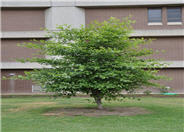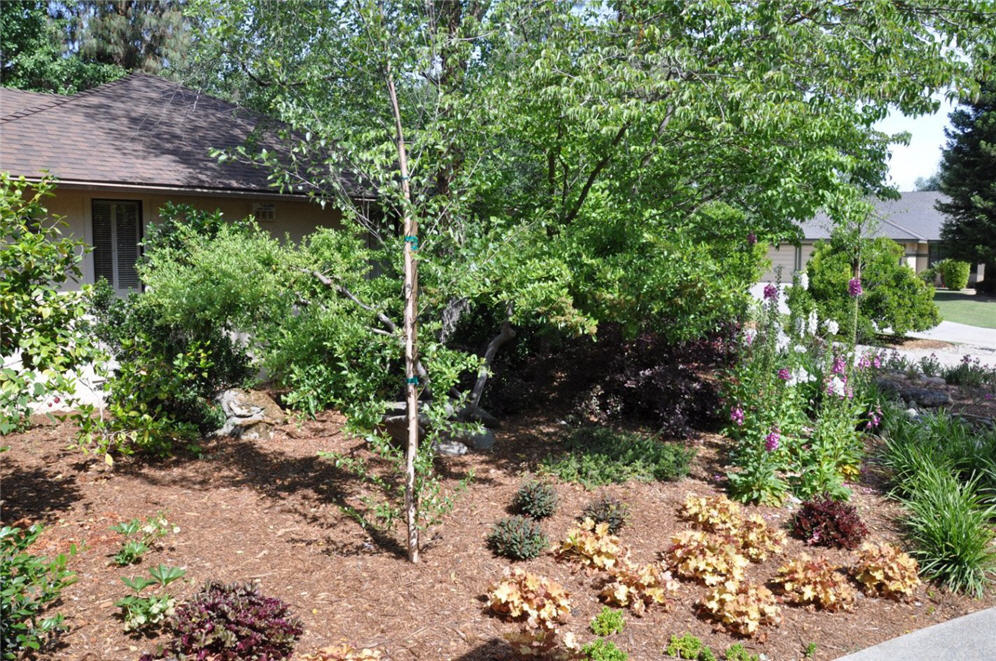
Common name:Common Foxglove
Botanical name:Digitalis purpurea
This biennial Foxglove will reach 3'-4' tall when blooming in the early summer. The large spire of huge, bell-shaped flowers ranges from purple to pink to cream with purple specks. Large, textured leaves form an attractive rosette until bloom time. This plant likes a moist, filtered-sun area similar to the Lobelias and Columbines. -Holland Wildflower Farm

Common name:White Alder, Western Alder
Botanical name:Alnus rhombifolia
White Alder is a deciduous tree with spreading or ascending branches and downward pointing tips. It has coarse teeth and dark green leaves. It is very fast growing to 40'-60' tall with a 40' spread. It is very heat and wind tolerant and is a native to California. Green yellow flowers appear in spring. During winter, small cones decorate bare limbs.

Common name:Cathedral Windows Coral Bells
Botanical name:Heuchera 'Cathedral Windows'
This perennial grows to less than 1' tall and has dark green, veined leaves. Small white flower spikes bloom in spring and summer, reaching 2' tall overall height. It prefers part shade or shade in warm inland areas with medium amount of watering.

Common name:Razzleberry Red Fringe Flower
Botanical name:Loropetalum chinense 'Razzleberri'
This lovely evergreen shrub grows to 6'-10' tall and 4'-5' wide, in a mounding habit. It tolerates sun and shade but prefers well draining, moist, acid soil. New foliage is burgundy colored, changing to olive green. Bright pink fringed flowers appear in spring but may show up all throughout the year. Provide a medium amount of watering and more during hot summer months.

Common name:Waxleaf Privet
Botanical name:Ligustrum japonicum 'Texanum'
This dense, evergreen shrub reaches 6'-8' tall and 4'-6' wide. Waxleaf Privet has dark green, leathery, evergreen leaves that make a great privacy hedge. White fragrant flowers bloom in spring and summer. Bees love these flowers! Blue black berries follow bloom season. Part of this shrub may be poisonous if ingested. It prefers full sun to light shade with a medium amount of watering, more in hot summer months.
| Designer: Jody Palmer | Gentle Berm |
Photographer: GardenSoft |
Soils and Compost:
Maintain a two to four inch layer of mulch on the soil surface to reduce weeds, infiltrate rain water, and reduce compaction.
Water Saving Tip:
Check the soil's moisture level before watering.
You can reduce your water use 20-50% by regularly checking the soil before watering.
Integrated Pest Management:
Attract, or buy beneficial insects such as ladybugs and lacewings to control pest outbreaks in your garden.
